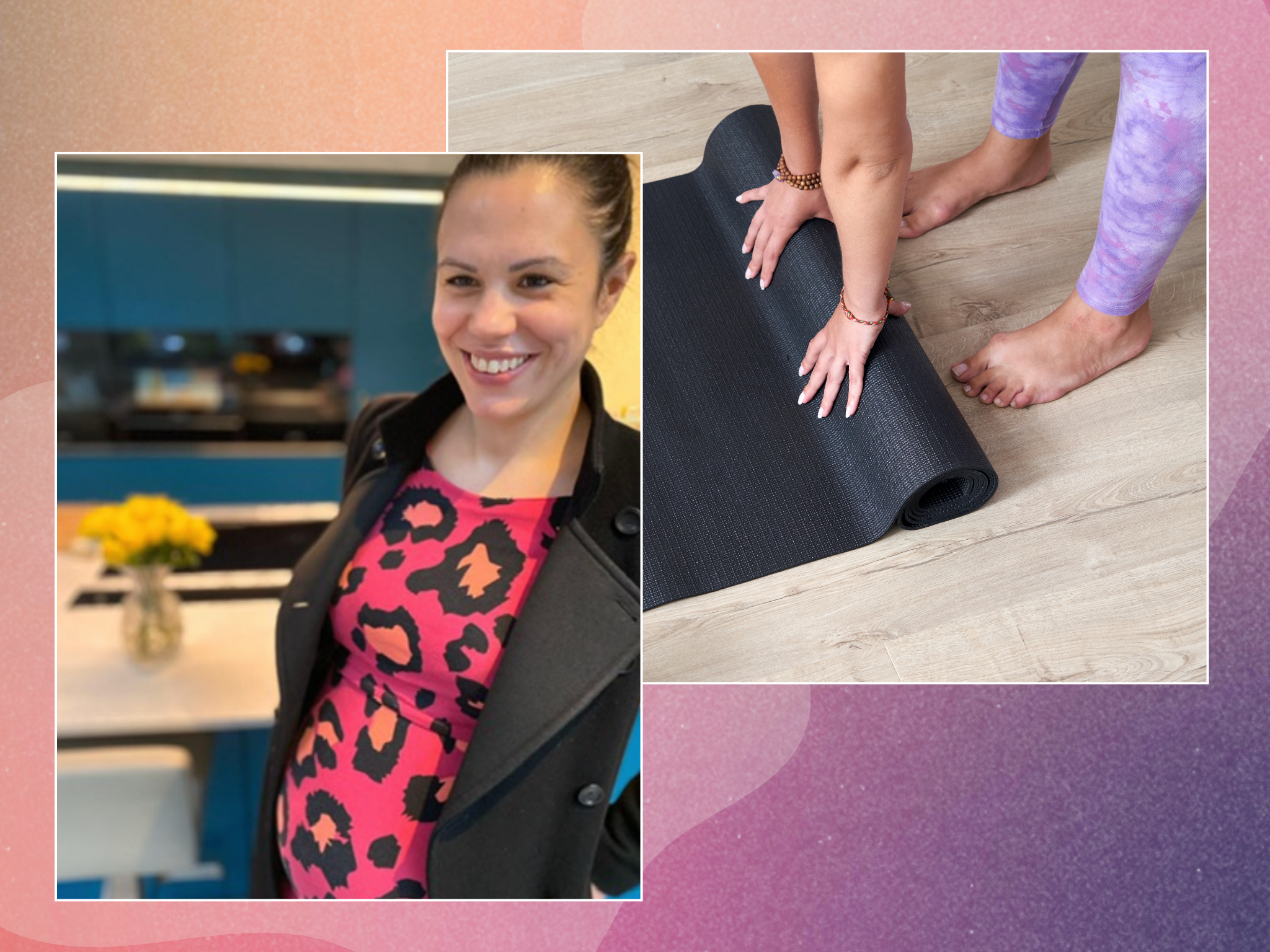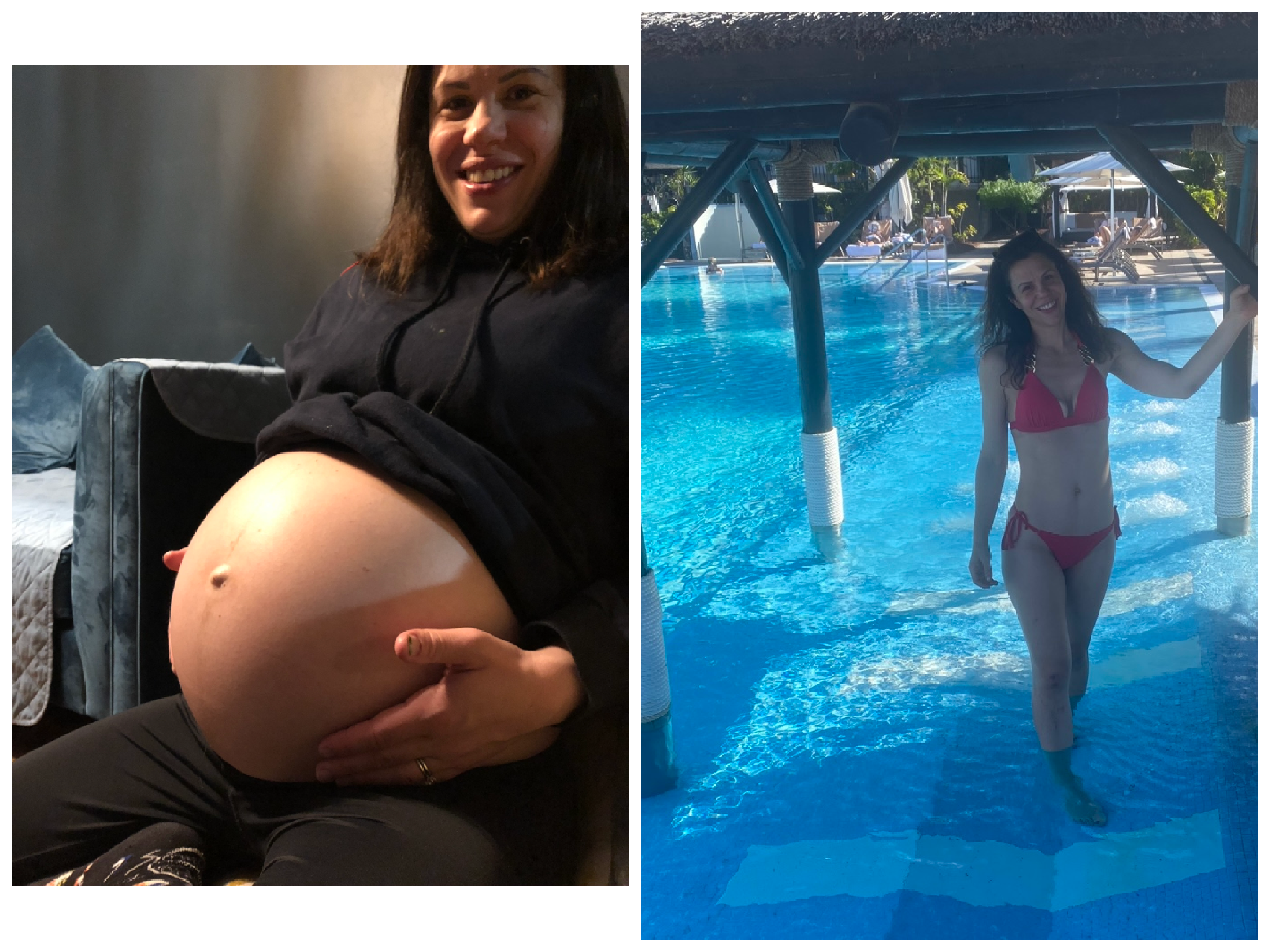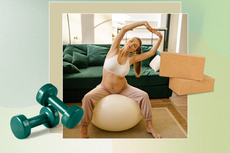How to strengthen your abs after pregnancy with gentle core exercises
It’s important to take your time to build up fitness after having a baby, and it all starts with the core

Snapping back into shape after a pregnancy is not something that happens by accident. Just like Suki Waterhouse and Jessie J who both shared post-partum snaps of their still-swollen bellies on social media, I still looked very pregnant when I left the hospital with my first bundle of joy.
Even more surprising was that I could barely walk. Having kept fit during pregnancy by completing spinning classes and weight training right up until the day before the baby was born, I imagined that I would skip out of hospital carrying the little one in a car seat, take a week or so off and then get back to the gym. However, after a 30-hour labour that ended in an emergency C-section, it felt like I’d been hit by a truck and then the truck had reversed over me. Every speed bump that we drove over hurt me, and I felt wobbly even walking.
After mentioning this to the GP at my six week check up and asking if I could return to running, let alone complete an Olympic-distance triathlon that I’d already optimistically signed up to four months post due-date, the answer was a firm “no”. I was told that unless I strengthened my abs first, other areas of my body would attempt to absorb the shock from the running. This could have been my back, IT bands or calves or it might affect my pelvic organs, causing to loss of bladder control – none of which sounded appealing to me.
With 10 years of experience as a personal trainer, Sarah Campus has helped hundreds of women get fitter and healthier after pregnancy. She explains that, “after pregnancy, your core muscles may have stretched or separated to accommodate the growing fetus, and hormonal changes can loosen ligaments. This can affect your core stability and may lead to conditions like diastasis recti [when the left and right abdominals separate during pregnancy].”
But how do you start to train your ab muscles when pregnancy has ripped apart your entire mid-section? Pre-pregnancy I could hold a plank for two and a half minutes. Post-pregnancy I could barely get into the plank position.
I decided to seek out expert advice and followed a series of workouts and simple exercises to strengthen my abs. Since then, I’ve repeated the process following three subsequent pregnancies in a bid to stay injury-free and physically and mentally fit, which has helped with raising my kids too.

How I started doing Pilates at home
After getting the bad news that weight-training, running and triathlon were off the agenda, the GP told me that I should start doing Pilates.
In some parts of the UK, Pilates teachers offer special postnatal classes, with exercises specifically designed to restore connections in the core and strengthen the pelvic floor. Unfortunately, there weren’t any within easy commuting distance of where I lived and I didn’t have the childcare to allow me time to travel to a class, do the workout and then travel home.
Before having the baby, I did a few regular home Pilates workouts following videos on the Blogilates YouTube channel run by fitness vlogger Cassey Ho. I saw that she had a video dedicated to a postnatal workout with a baby, so I started with that and repeated it every day for two weeks.
After that, I moved onto Ho’s Pilates for Beginners playlist, in which she explains posture, form and breathing in detail. All of the 10 vidoes in this series take less than 15 minutes, meaning that I could put the baby down for a nap, do a workout and then still have time for household chores and a shower.
Pilates exercises that helped me the most
Every day, I warmed up my core by doing a few key exercises and then did at least one Blogilates workout. Some days I did 15 minutes of exercise and sometimes I moved my body for 45 minutes. All you need for these moves is a yoga mat and a wall.
My warm up included:
Breathing exercises
Standing with my back against a wall, I inched my feet forward to position the whole back against the wall. With heels together and toes slightly apart, I made sure there was a long line from head to tailbone. The trick here is to engage and lift the stomach muscles up, placing hands on the belly to check the muscles are firing up, hold the stomach in for five seconds and release. I’d repeat this 5-10 times.
Glute bridges
A simple glute bridge involves lying flat, shoulders connected to the floor, knees bent and making sure the feet are parallel and weight is evenly distributed on the heels. Place your hands under the back of the pelvis and press your hips up into bridge position. Breathe in and on the breath out tilt the pelvis back to the mat and lift your bottom off the floor, engaging the pelvic floor. Breathe in to hold the position and breathe out to lower.
Hip twists
Hip twists are very easy to do and help with your mobility as well as your core strenth. Lie on your back with knees bent to 90 degrees and a neutral pelvic tilt. Inhale to prepare, then exhale and roll one leg away from your body. Inhale again and roll your knee back in until both hips are in line, then repeat with the other leg.
Clams
In a side-lying position, knees and hips with a slight bend, rest one hand on the hip or mat in front to support yourself. Breathe in to prepare and breathe out to lift the top knee only, keep the ankles together. Lower the knee back to the starting position.
How long does it take to rebuild the core muscles after pregnancy?
While everyone’s circumstances are different depending on their fitness level pre-pregnancy and the type of birth they’ve had, I found that it took me a solid four months of daily Pilates workouts. Even then, I didn’t feel strong enough to go straight back to running long distances and I took my time with walking and running intervals. I also used the Couch to 5K app to slowly get back into running but it took me a year before I was ready to wear a bikini again.

The best home fitness workouts for new mums
By the time my third baby came along in March 2020, just at the start of the pandemic, I thought I had my ab-strengthening routine down to a fine art. But lockdown saw more personal trainers and fitness experts pivot and release apps or YouTube content. This meant there were far more options for at-home workouts, most free and accessible for anyone to follow. I was able to diversify my training and seek out new movement styles that were great for core support.
Olympian Jessica Ennis, who’s a mother of two, released the Jennis app with several videos dedicated to postnatal recovery. Following her videos in order was a brilliant way to get moving in a gentle way. The workouts are short and sweet, getting the circulation flowing around body and brain without leaving you uncomfortable or sweaty.
Around the same time, yoga mega-influencer Hannah Barrett had a baby and collaborated with women’s health physio Finola Burrell to create a comprehensive e-book about what you can and can’t do post-pregnacy, backed up by years of research and expertise. That book became my bible.
For daily motivation, I found Instagram influencer Sarah Campus – who goes by @ldnmumsfitness on Instagram – very inspiring. She shares daily workout hacks and reasons to find time to exercise, and has a library of on-demand workouts on her LDN MUMS FITNESS app too.
Campus suggests the following moves for an effective postpartum ab workout:
Stomach exercises
Lie on your side with slightly bent knees, relax your stomach, and breathe in. As you breathe out, gently pull in your lower stomach like a corset, narrowing your waistline. Squeeze your pelvic floor muscles at the same time and hold for 10 seconds.
Pelvic tilts
Lie on your back with bent knees, tighten your abs, and tilt your pelvis up to flatten your back against the floor. Hold for up to 10 seconds and repeat 5 times, gradually working up to 10–20 repetitions.
Core engagement
Lie on your back with your knees up and feet down. Place your fingertips together under the curve of your lower back, above your tailbone. Take a deep breath in, then exhale and gently press your lower back into your fingertips. Draw your navel in toward your spine, as if you’re swallowing something, until you feel a tightness in your core. You can keep your core engaged while adding movement, like a supine march.”
The postpartum journey is different for everyone, but by being consistent with these simple moves and mostly free resources I’ve been able to strengthen my abs, rediscover the joy of running and stay healthy for myself and my kids.
Read more: The health benefits of evening primrose oil are endless




Join our commenting forum
Join thought-provoking conversations, follow other Independent readers and see their replies
Comments